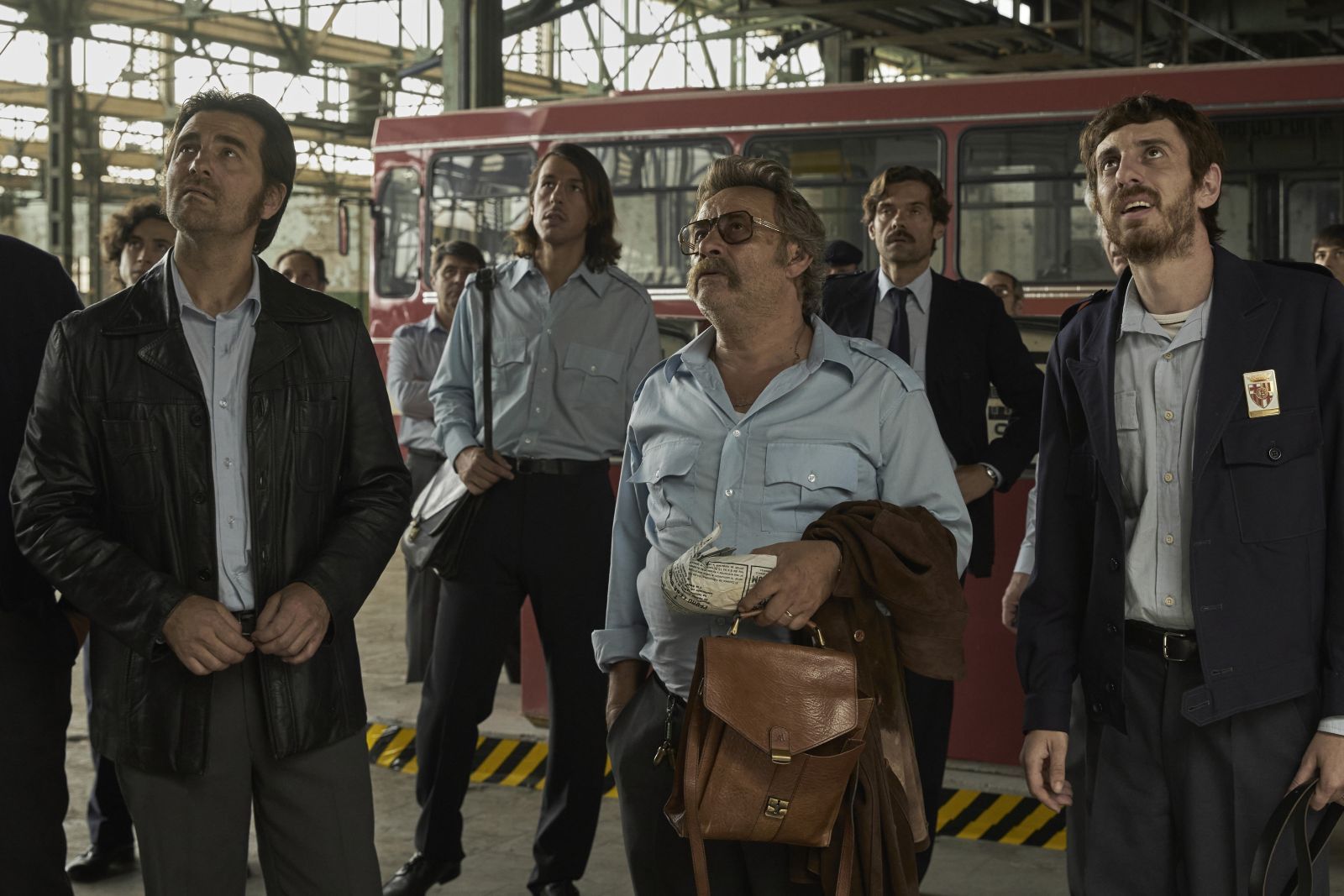A box-office smash in Spain and a co-winner of Best Film at the Goya Awards, Marcel Berrena‘s The 47 is a little miracle of crowd-pleasing cinema. A socially-conscious and enlightening true story of peaceful revolutionary zeal causing real change. Anchored by an incredibly charismatic leading performance by Eduard Fernández, it’s easy to see why it’s captured the heart of its home audiences.
Manolo Vital (Fernández) was one of a group of economic migrants to Barcelona that built the suburb of Torre Baró with their bare hands in 1958, in defiance of Franco’s Falangist regime. 20 years later the initial shanty town has become a permanent fixture but is still largely cut off from the city itself.
Manolo has remained one of the community leaders (and wrestled the heart of former nun Carmen (a wonderful Clara Segura) away from the Catholic Church. He has also driven the 47 bus route for all that time, while advocating for the bus to run through to his beloved home. Frustrated with the bureaucracy of the Catalan government, the possibility of redundancy, and a tragedy in the community, Manolo decides to carry out a small act of civil disobedience that comes to have huge impact.
Right from the prologue which literally lays the foundation for the community, it’s clear to see why people gravitate to Manolo for guidance. He’s a gruff, uncomplicated man, but a natural problem solver and leader. Fernández plays him with a natural, easy air of authority. He’s also stubborn and dogmatic in this beliefs, yet also displays a pragmatic willingness to doff his cap to the authorities, much to the annoyance of his hot-headed daughter Joana (Zoe Bonafonte). It’s a real multifaceted performance, and it’s perhaps easier to accept Manolo as an engaging character when Fernández isn’t a household name here.
This sense of authenticity extends to some impeccable set design and a novel use of archive footage from the ’70s of buses traversing the streets of Barcelona. Berrena weaves this archive footage into shots of Manolo and his passengers flavoured with some artificial grain and uses the mix as transitional editing, rather like an old-fashioned screen wipe. It’s a lovely technique and contributes to the sense of time and place that is one of the film’s strongest suits.
In its focus on a specific location and its awareness of the Vogon-level intricacies of local bureaucracy there are hints of Akira Kurosawa‘s intimate masterpiece Ikiru, and Manolo’s bus inching up the hill towards Torre Baró recalls Herzog‘s boat being hauled over a mountain in Fitzcarraldo. The 47 doesn’t match those heights, but this is mainstream cinema of rare artistry (and a pleasing anti-authoritarian stance).
Some liberties have been taken with the story, in that Manolo’s position as an almost lone revolutionary has apparently been overstated somewhat. The wider community was much more involved in the events which finally saw Torre Baró fully assimilated into Barcelona. It’s also fairly conventional in its construction and storytelling, despite being an exceptional example of the ‘based-on-true-events’ form. And it really is exceptional.
Screened as part of Edinburgh Spanish Film Festival


Comments